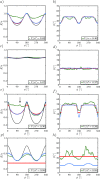Morphology of Evaporating Sessile Microdroplets on Lyophilic Elliptical Patches
- PMID: 30624944
- PMCID: PMC6374750
- DOI: 10.1021/acs.langmuir.8b03393
Morphology of Evaporating Sessile Microdroplets on Lyophilic Elliptical Patches
Abstract
The evaporation of droplets occurs in a large variety of natural and technological processes such as medical diagnostics, agriculture, food industry, printing, and catalytic reactions. We study the different droplet morphologies adopted by an evaporating droplet on a surface with an elliptical patch with a different contact angle. We perform experiments to observe these morphologies and use numerical calculations to predict the effects of the patched surfaces. We observe that tuning the geometry of the patches offers control over the shape of the droplet. In the experiments, the drops of various volumes are placed on elliptical chemical patches of different aspect ratios and imaged in 3D using laser scanning confocal microscopy, extracting the droplet's shape. In the corresponding numerical simulations, we minimize the interfacial free energy of the droplet, by employing Surface Evolver. The numerical results are in good qualitative agreement with our experimental data and can be used for the design of micropatterned structures, potentially suggesting or excluding certain morphologies for particular applications. However, the experimental results show the effects of pinning and contact angle hysteresis, which are obviously absent in the numerical energy minimization. The work culminates with a morphology diagram in the aspect ratio vs relative volume parameter space, comparing the predictions with the measurements.
Conflict of interest statement
The authors declare no competing financial interest.
Figures






Similar articles
-
Sessile Nanodroplets on Elliptical Patches of Enhanced Lyophilicity.Langmuir. 2017 Mar 21;33(11):2744-2749. doi: 10.1021/acs.langmuir.7b00002. Epub 2017 Mar 6. Langmuir. 2017. PMID: 28248114 Free PMC article.
-
Effect of gravity-induced shape change on the diffusion-limited evaporation of thin sessile and pendant droplets.Phys Rev E. 2025 Apr;111(4-2):045107. doi: 10.1103/PhysRevE.111.045107. Phys Rev E. 2025. PMID: 40410957
-
Measuring the Nonuniform Evaporation Dynamics of Sprayed Sessile Microdroplets with Quantitative Phase Imaging.Langmuir. 2015 Oct 13;31(40):11020-32. doi: 10.1021/acs.langmuir.5b02148. Epub 2015 Oct 2. Langmuir. 2015. PMID: 26389788
-
Stick-Jump (SJ) Evaporation of Strongly Pinned Nanoliter Volume Sessile Water Droplets on Quick Drying, Micropatterned Surfaces.Langmuir. 2016 Mar 22;32(11):2679-86. doi: 10.1021/acs.langmuir.6b00070. Epub 2016 Mar 11. Langmuir. 2016. PMID: 26950673
-
Simultaneous spreading and evaporation: recent developments.Adv Colloid Interface Sci. 2014 Apr;206:382-98. doi: 10.1016/j.cis.2013.08.006. Epub 2013 Sep 4. Adv Colloid Interface Sci. 2014. PMID: 24075076 Review.
Cited by
-
Plasmonic Microbubble Dynamics in Binary Liquids.J Phys Chem Lett. 2020 Oct 15;11(20):8631-8637. doi: 10.1021/acs.jpclett.0c02492. Epub 2020 Sep 29. J Phys Chem Lett. 2020. PMID: 32960058 Free PMC article.
References
-
- Gao X.; Yan X.; Yao X.; Xu L.; Zhang K.; Zhang J.; Yang B.; Jiang L. The Dry-Style Antifogging Properties of Mosquito Compound Eyes and Artificial Analogues Prepared by Soft Lithography. Adv. Mater. 2007, 19, 2213–2217. 10.1002/adma.200601946. - DOI
-
- Barthlott W.; Neinhuis C. Purity of the sacred lotus, or escape from contamination in biological surfaces. Planta 1997, 202, 1–8. 10.1007/s004250050096. - DOI
LinkOut - more resources
Full Text Sources

